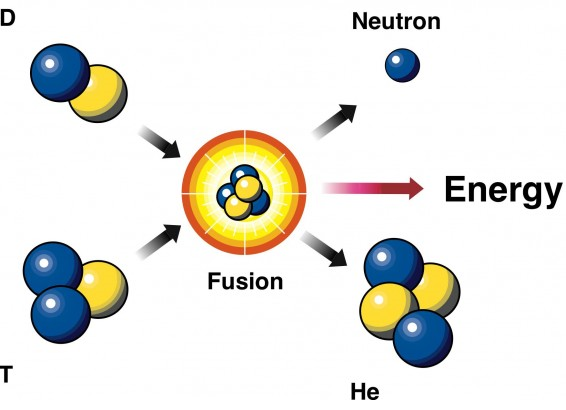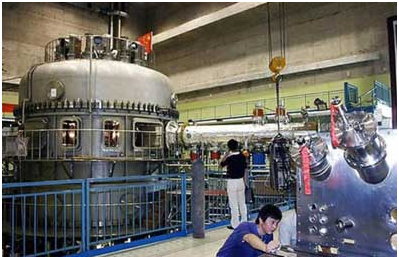
Blog
-
Geiger Readings for January 18, 2013
Ambient office = 86 nanosieverts per hourAmbient outside = 92 nanosieverts per hourSoil exposed to rain water = 74 nanosieverts per hourCrimini mushroom from Top Foods = 145 nanosieverts per hourTap water = 77 nanosieverts per hourFiltered water = 66 nanosieverts per hourAlaskan Copper River Salmon = 96 nanosieverts per hour -
Nuclear Weapons 60 – Trouble in the U.S. Missiles Forces
It has been said that duty in the military is comprised of long periods of boredom punctuated by short episodes of terror. I guess that this presupposes that the soldier will see battle. There are some postings that do not have any periods of terror but do have continuous boredom with no relief in sight. That sort of situation takes its toll on people and people react to the stress in different ways. This has been illustrated by the bad press that the U.S. nuclear missile forces have been getting lately. I have written about previous problems but since they have been in the news again with new charges, I thought it was time to revisit the subject starting with a recap.
Last April, seventeen officers at the Minot Air Force Base in North Dakota were judged to be “temporarily unfit for duty” after the discovery of safety violations. They were given several weeks of remedial training. Other groups in the missile force have failed testing recently.
Major General Michael Cary, the commander of U.S. ballistic missiles, was fired last October by the U.S. Air Force after reports of his behavior at a conference of nuclear missile issues held in Russia. He was late for meetings, made insulting comments, and drank heavily in the evenings and on conference outings.
It has been reported that Air Force officers left blast doors open several times in their underground command posts while they were sleeping. This was a serious breach of security because intruders could have broken in.
Now the news comes that 11 officers in the missile force were just suspended for the use of drugs. Aside from issues of being less than competent while under the influence of drugs, there is the problem of possible blackmail by someone who knew of the drug use.
The drug probe was expanded when evidence of wide spread cheating on certification exams was uncovered. In all, thirty four officers have been implicated in the cheating scandal. Some of the cheaters actually texted during exams to get the answers. These exams are important because they certify that officers are prepared to competently carry out orders to launch nuclear missiles. Some officers have said that there is pressure to cut corners and cheat to get the highest possible scores during the tests in order to increase chances for promotion.
The Air Force asked the Rand Corporation to conduct a study into morale in the missile forces because of recent problems. The unpublished report of the study concludes that many in the missile forces are suffering “burn-out” from stress. There are also reports of sexual assaults and domestic violence among the missile forces. Court-marshals in the missile forces are about twice numerous as in the A.F. in general. Other types of punishments and disciplinary actions are also high.
The U.S. has about four hundred and fifty missiles with multiple warheads aimed and ready to launch at potential enemies within minutes. These members of the Air Force missiles forces are stuck in the middle of North Dakota in a silo underground. They are charged with the handling of the most destructive weapons ever created by the human race. The reports of lax discipline, poor training, cheating on tests, gambling, drug use, heavy drinking, etc. suggest that we need to make some major changes in the staffing of those missile silos. There is also the fact that those officers know that the only relief from boredom that they might have would be carrying out orders to launch missiles that might bring an end to civilization.
U.S. nuclear missile Launch control center:
-
Radiation News Roundup January 17, 2013
Fukushima cesium has been detected in Alaska salmon samples. enenews.com
Vattenfall in Sweden has officially started a decade-long public consultation into new nuclear build, which it expects to be necessary after current reactors retire. world-nuclear-news.com
A mini-submarine with wireless connectivity is being used to transmit live data on conditions in a legacy fuel storage pond at the UK’s Sellafield site. world-nuclear-news.com
-
Geiger Readings for January 17, 2013
Ambient office = 114 nanosieverts per hourAmbient outside = 76 nanosieverts per hourSoil exposed to rain water = 58 nanosieverts per hourRed seedless grapes from Top Foods = 81 nanosieverts per hourTap water = 105 nanosieverts per hourFiltered water = 84 nanosieverts per hour -
Nuclear Fusion 11 – History 9
Over the last series of posts on fusion, I have covered the history of research on fusion reactors. The first date in the timeline in 1946. A couple of scientists proposed something called a zeta pinch for the confinement, compression and heating of a plasma of hydrogen. By 1947, a zeta pinch device had been constructed and tested in the United Kingdom. In 1950, Soviet scientists proposed a torus shaped device they called a tokamak. Soon experiments were being run in the United States and the Soviet Union on different ways of applying magnetic fields in different shaped vessels to control the instabilities that appeared in magnetically confined plasmas.
After a decade of research on the tokamak approach, in the early 1960’s a new type of fusion reactor was proposed. In this reactor, a spherical configuration of lasers bombarded a small pellet of deuterium and tritium to create a fusion reaction. A variety of laser configurations were tested and other means of heating the target were tried including bombardment with a stream of heavy ions. This approach was referred to as inertial confinement.
In the following posts, I detail many of the different hardware configurations that were tried for the two types of fusion initiation. Scientists in the U.S., the U.K., Germany, France, Japan, the Soviet Union, Russia, China and Japan worked on fusion projects. There were a number of international collaborations such as the Joint European Torus and the International Thermonuclear Experimental Reactor. The ITER project is a tokamak design that is still in the process of development and testing. It is located in the Cardarache facility in France.
Over the past fifty years, tens of billions of dollars have been spent on fusion research. Current expenditures for global fusion research are over a billion dollars a year. So what is the prognosis for commercial energy production with fusion? One recent estimate concluded that it would require over one hundred billion dollars and fifty years to achieve commercial fusion power reactors. For the entire history of fusion, estimates have consistently said that commercial fusion power is decades away. After fifty years, the estimate is still that practical fusion power is decades away.
As attractive as the concept of creating electrical power with isotopes of hydrogen is, it does not appear that fusion power will have any significant role to play in our current energy economy other than consuming billions of dollars. There is a closing window of a few decades for the human race to stop pumping carbon dioxide into the atmosphere before climate change destroys human civilization. Obviously fusion power will not be online soon enough to help us with that problem.
As much as I would love to see science tame nuclear fusion I am skeptical that it will ever happen. There are so many serious problems facing human civilization that we will be lucky if it survives until 2060. There may not be a hundred billion dollars available to contribute to fusion research during that time.
Basic fusion reaction where deuterium (D) and tritium (T) fuse to create helium:
-
Geiger Readings for January 16, 2013
Ambient office = 106 nanosieverts per hourAmbient outside = 93 nanosieverts per hourSoil exposed to rain water = 97 nanosieverts per hourBartlett pear from Top Foods = 111 nanosieverts per hourTap water = 91 nanosieverts per hourFiltered water = 72 nanosieverts per hour -
Nuclear Fusion 10 – History 8
In 2006, China completed the Experimental Advanced Superconducting Tokamak (EAST) test reactor at Hefei, the capital city of Anhui Province. The EAST is the first tokamak to use superconducting magnets for both the toroidal and poloidal fields.
In 2009, the National Ignition Facility (NIF) is completed at Lawrence Livermore National Laboratory. The NIF is an inertial confinement fusion reactor with a spherical configuration of lasers that heats and compresses a pellet of hydrogen in order to generate a fusion reaction. The Fusion Power Corporation files a patent for a “Single Pass Radio Frequency Driver which is a Radio Frequency Accelerator Driven Heavy Ion Fusion Process and Method. “A new arrangement of current multiplying processes that employs multiple isotopes to achieve the desired effect of distributing the task of amplifying the current among all the various processes, to relieve stress on any one process, and to increase margin of safety for assured ICF.”
In 2010, at the Heavy Ion Fusion-2010 Symposium in Germany, Robert Burke presents a report on Single Pass HIF. Charles Helsley projects the commercialization of Heavy Ion Fusion by 2020.
In 2011, at the Workshop for Accelerators for Heavy Ion Fusion at Lawrence Berkeley National Laboratory is held in May, Robert J. Burke presents his report on “Single Pass Heavy Ion Fusion”. The Accelerator Working Group makes recommendations with respect to moving toward commercial fusion power utilizing Radio Frequency Accelerator Driven HIF (SPRFD).
In 2012, Stephen Slutz and Roger Vesey of Scandia National Laboratories published a paper in Physical Review Letters describing a computer simulation of Magnetized Liner Inertial Fusion (MagLIF). In MagLIF, a one hundred nanosecond pulse of electricity is run through a cylinder that contains a hydrogen pellet. The current generates a powerful zeta pinch magnetic field which compresses the cylinder causing it to implode. Just prior to implosion, the hydrogen pellet is heated with a laser beam. The MagLIF combines features of both inertial confinement fusion and magnetic confinement, the two main approaches to nuclear fusion. The computer simulation suggests that MagLIF may be able to generate one thousand times the energy that is input to trigger fusion.
The Joint European Torus in the UK announces that it has made a major breakthrough in controlling plasma instability which is one of the main problems encountered in magnetic confinement.
The Nineteenth International Heavy Ion Fusion Symposium is held in Berkeley, California. Burke presents updates to his work on SPRFD HIF. Helsley gives a report on the economics of SPRFD for commercial generation of electricity. Fusion Power Corporation obtains a Russian patent for SPRFD.
In 2013, the Chinese EAST test reactor manages to confine a plasma for thirty seconds which represents a record. This breakthrough is ten times better than other tokamaks have been able to achieve to date.
This concludes my presentation of the history of world fusion research.
Chinese Experimental Advanced Superconducting Tokamak:
-
Radiation News Roundup January 15, 2013
California State Long Beach Campus researchers will monitor the state’s kelp forest for radioactive contamination from the meltdown of the Fukushima nuclear power plant in Japan. manhattanbeach.patch.com
More U.S. sailors from the Ronald Reagan coming forward with problems after service off Fukushima. enenews.com
The forced closure of RWE’s Biblis nuclear power plant after the Fukushima accident was unlawful, the German Supreme Administrative Court has ruled. world-nuclear-news.com
A nuclear cooperation agreement has been signed between Hungary and Russia, which includes the construction of two new units at Hungary’s Paks nuclear power plant. world-nuclear-news.com
-
Geiger Readings for January 15, 2013
Ambient office = 101 nanosieverts per hourAmbient outside = 111 nanosieverts per hourSoil exposed to rain water = 96 nanosieverts per hourIceberg lettuce from Top Foods = 95 nanosieverts per hourTap water = 84 nanosieverts per hourFiltered water = 77 nanosieverts per hour






